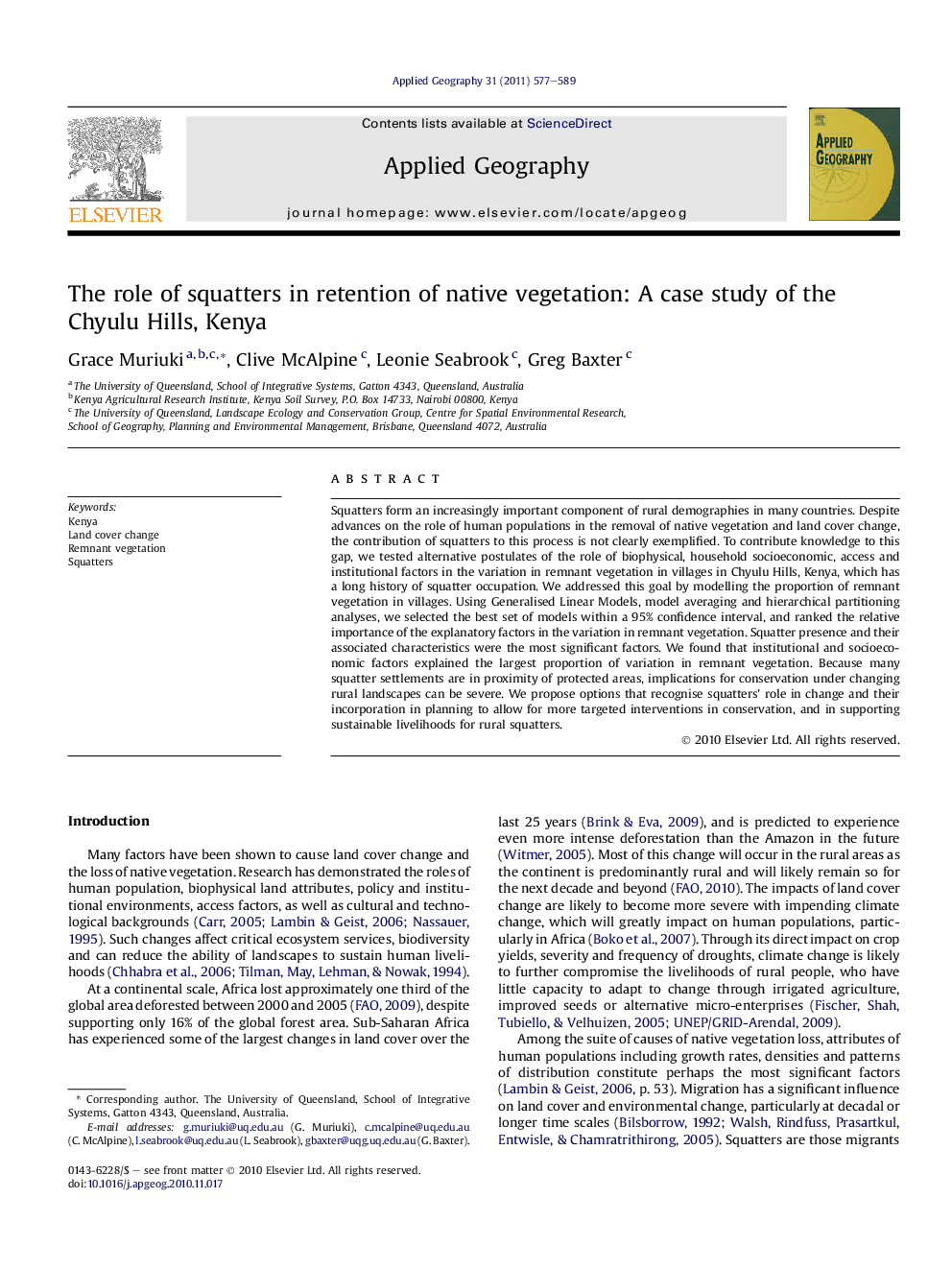| Article ID | Journal | Published Year | Pages | File Type |
|---|---|---|---|---|
| 83768 | Applied Geography | 2011 | 13 Pages |
Squatters form an increasingly important component of rural demographies in many countries. Despite advances on the role of human populations in the removal of native vegetation and land cover change, the contribution of squatters to this process is not clearly exemplified. To contribute knowledge to this gap, we tested alternative postulates of the role of biophysical, household socioeconomic, access and institutional factors in the variation in remnant vegetation in villages in Chyulu Hills, Kenya, which has a long history of squatter occupation. We addressed this goal by modelling the proportion of remnant vegetation in villages. Using Generalised Linear Models, model averaging and hierarchical partitioning analyses, we selected the best set of models within a 95% confidence interval, and ranked the relative importance of the explanatory factors in the variation in remnant vegetation. Squatter presence and their associated characteristics were the most significant factors. We found that institutional and socioeconomic factors explained the largest proportion of variation in remnant vegetation. Because many squatter settlements are in proximity of protected areas, implications for conservation under changing rural landscapes can be severe. We propose options that recognise squatters’ role in change and their incorporation in planning to allow for more targeted interventions in conservation, and in supporting sustainable livelihoods for rural squatters.
Research highlights► Squatters play a significant role in land cover change in rural landscapes where they occur. ► Analyzing data at village level scales comparable to squatter camps can reveal important community characteristics that are important in the retention of native vegetation and land cover change. ► Despite its prevalence in the literature, policy interventions such as tenure security may be insufficient on their own in influencing the direction of land cover change, particularly where tenure insecurity is prevalent and long term. ► Combined use of Generalised Linear models with hierarchical portioning and model selection can reveal the contributions of the drivers of land cover change, and therefore provide options for more focused interventions.
